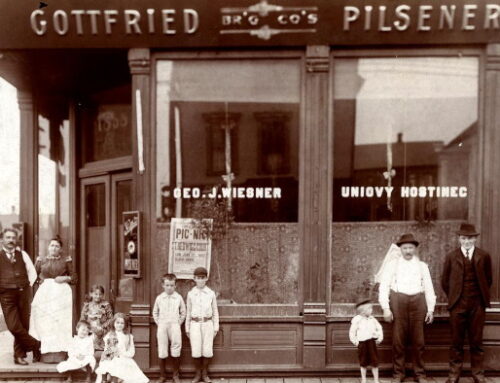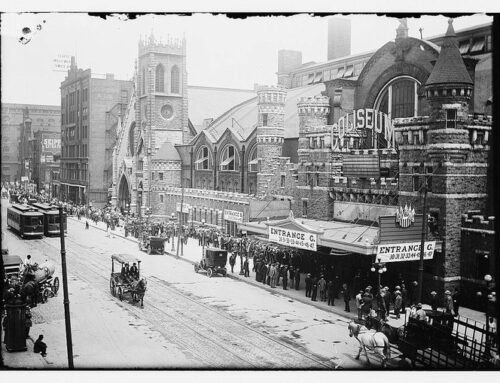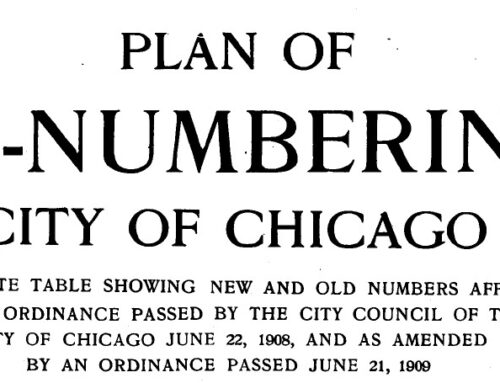This post is about unusual records and my great-grandfather Chicago tailor Hans Loe.
Like so many European immigrants to American cities, my great-grandfather worked as a tailor. His brother cut patterns for a living. Hans’s sons became tailors. They in turn married women they met in the garment industry, who also worked “tailoresses,” according to the census. Piecework, small jobs farmed out by factories and paid per item finished, occupied those at home.
Before Hans Christensen Loe left for America in 1879, he worked as a floating log worker (flødningsarb). One of those brave (and undoubtedly crazy) guys who rode logs down a river to the lumber mill, Hans worked on the Drammenselva river. (Fun fact: today the local Baseballklubb is called the Drammen Loggers.)
Chicago Tailor Hans Loe
Life must have seemed relatively safe and very boring in a Chicago garment factory. Maybe that’s why Hans opened a garment business with his sister-in-law’s brother. By 1892, Hans set up at home at 265 Noble Street, subcontracting to make pants.
When I thought of my ancestors laboring away in Chicago, I thought of the occupational safety protections they needed. Now I find those labor laws protected a worker from my great-grandfather.
The other day, I was browsing through the Third Annual Report of the Factory Inspectors of Illinois For the Year Ending December 15, 1895, as one does (if you are as crazy as a Norwegian floating log worker genealogist). And there on page 98 appeared my great-grandfather Hans. He employed a girl under 14, against the law for two years. Since his brother had no children, and Hans had no daughters, I don’t know the name or age of this young girl. After a court appearance, Hans paid court costs and a $3 fine.
Illinois Labor Laws
Championed by progressive social reformer and activist Jane Addams, 1893 Illinois legislation regulated the employment of children. Hans fell afoul of this Section:
§ 4. No child under fourteen years of age shall be employed in any manufacturing establishment, factory, or workshop within this State. It shall be the duty of every person, firm, corporation, agent, or manager of any corporation employing children, to keep a register in which shall be recorded the name, birthplace, age, and place of residence of every person employed by him, them, or it, under the age of sixteen years ; and it shall be unlawful for any person, firm, or corporation, or any agent or manager of any corporation, to hire or employ in any manufacturing establishment, factory, or workshop, any child over the age of fourteen years and under the age of sixteen years, unless there is first provided and placed on file an affidavit made by the parent or guardian….
The Rest of the Story
Was he just ignorant of a relatively recent law in 1895? I know things were always tough for Hans and Ahne Loe and their six sons. Perhaps this is just ancestor-excusing, though. I’m sure life was also difficult for a girl under 14 doing piecework and the family she was helping to support. I’m so glad that vigilant and foresighted women like Jane Addams helped her.
Chicago tailor Hans Loe was never again charged after he paid the $3 fine (about $90 today). By 1899, Hans employed 10 people: two women and eight men. All were over the age of 16.
Unusual Records
The April issue of First Friday with Sassy Jane features unusual records for genealogy research. Are you subscribed to my free newsletter? And do you have an unusual record you’d like to share?







Many thanks!
Glad it helps. Stay tuned!
Nancy Loe, thanks for sharing this amusing, engaging, and informative glimpse into the garment industry of 19th century Chicago. I am really interested in knowing how to access the source document pictured at the top of this post. It may yield some clues to resolve a very old question about my great-grandfather’s adoption.
My great-grandfather Charles was adopted as a baby, by an elderly Swedish couple who owned a successful garment manufacturing business (Sven Bengtsson Rosberg and his wife, Karna Pehrsdotter). I’ve recently learned that Charles’ biological mother had a sister and brother-in-law who were also engaged in the tailoring trade. I’d like to see if the adoptive family and biological family were linked professionally, perhaps the biological family doing contracted work for the adoptive family. Any tips on source references gratefully received! Thanks.
Love the blog name, deadkeenfamilyhistory! I didn’t mean to be so mysterious about the featured image. For some reason, my WP theme doesn’t allow hot links to those images, but it can link to images within the post. And I think I made that final hot link a bit too small.
I found the years I needed for these serial reports at HathiTrust: http://bit.ly/2TQSpbO And other years are available at Google Books and probably at Internet Archive.
Happy searching from my Chicago Bengtssons to yours. :)